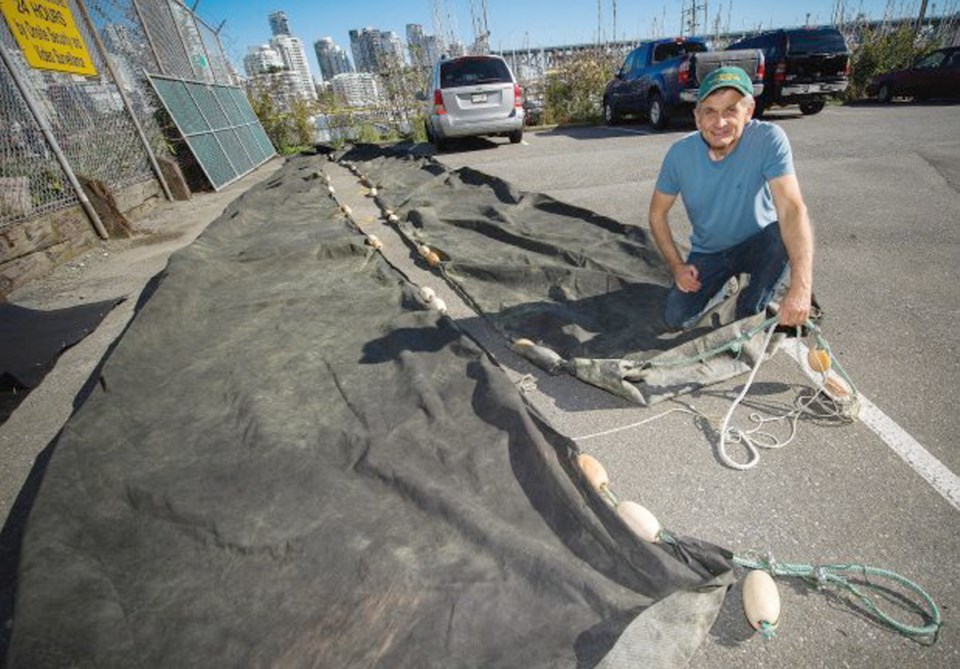Before bridges stretched across False Creek and marinas dotted its waters, the 91ԭ�� inlet was a rich spawning ground for herring, which drew predatory dolphins and whales into surrounding waters.
But according to Jonn Matsen, co-chair of the Squamish Streamkeepers’ Society, when False Creek was dredged and creosote-soaked pilings were driven into the seabed, its herring-friendly habitat faded and the fish and their predators all but vanished.
Now Matsen and the streamkeepers plan to reverse some of the damage with an unexpected product that can turn docks themselves into herring spawning grounds — plastic.
“Herring see a nice clean surface and they spawn on it,” he explained. In particular, they are attracted to wooden pilings which are often coated in creosote, a preservative that is toxic to fish eggs.
“What we’ve tried is wrapping the pilings with a friendlier material,” he said.
The idea came about after the streamkeepers found evidence in 2006 that herring had been attempting to spawn in the Squamish Estuary about 50 km north of 91ԭ��. It’s a habitat which — like False Creek — was once a significant spawning ground. The group soon discovered that herring were attempting to spawn under docks in areas that had lost eelgrass due to dredging or development. But their eggs were dying. The group experimented by wrapping black plastic and landscape fabric around pilings to block the creosote. It worked. The herring liked the texture of the surface and eggs were surviving, so they wrapped more pilings — nearly 200 in all.
“Lo and behold, they came back and spawned dramatically,” he said.
Over the course of a few years, other species returned to the area as well, according to Matsen. He attributed the recent return of 91ԭ�� white-sided dolphins and humpback whales to Howe Sound to a resurgence in herring.
“There’s enough life back in Howe Sound that it’s attracting the bigger predators,” he said.
“We think we can do the same thing in False Creek.”
Matsen said the downtown inlet remains a suitable spot for herring for the same reason that it is an ideal location for boats — it is protected from waves and heavy wind. But like other sheltered bays on the heavily developed east side of Georgia Strait, False Creek needs some modification to support herring again.
The society plans to install plastic wrappings on as many as 20 pilings at Fisherman’s Wharf — by Granville Island — before herring enter the area to spawn in February and March. It also intends to set up at Burrard Civic Marina converted gill nets that mimic eelgrass and float with the tide, a second method the group has tried.
“We’ve always experimented,” said Matsen. “We might go in and do a couple of different things and then see how they react that year.”
Matsen said the streamkeepers have relied on a steady flow of $5,000 annual donations from Telus to keep their herring restoration work going, including its recent test runs in False Creek.
Last winter the society installed small patches of their latest iteration of plastic wrap in the inlet. When they returned to check on them, they were laden with eggs.
Matsen predicts the smaller February spawn will be successful, but cautioned that the fate of the larger March spawn could be dependent on weather conditions. At low tide, eggs attached to the pilings are exposed to air and if it’s too warm, they can fail. It is one reason for testing both the piling and net systems at the inlet.
“It will be a little trial and error and hopefully one year we’ll get the herring run back,” said Matsen.


